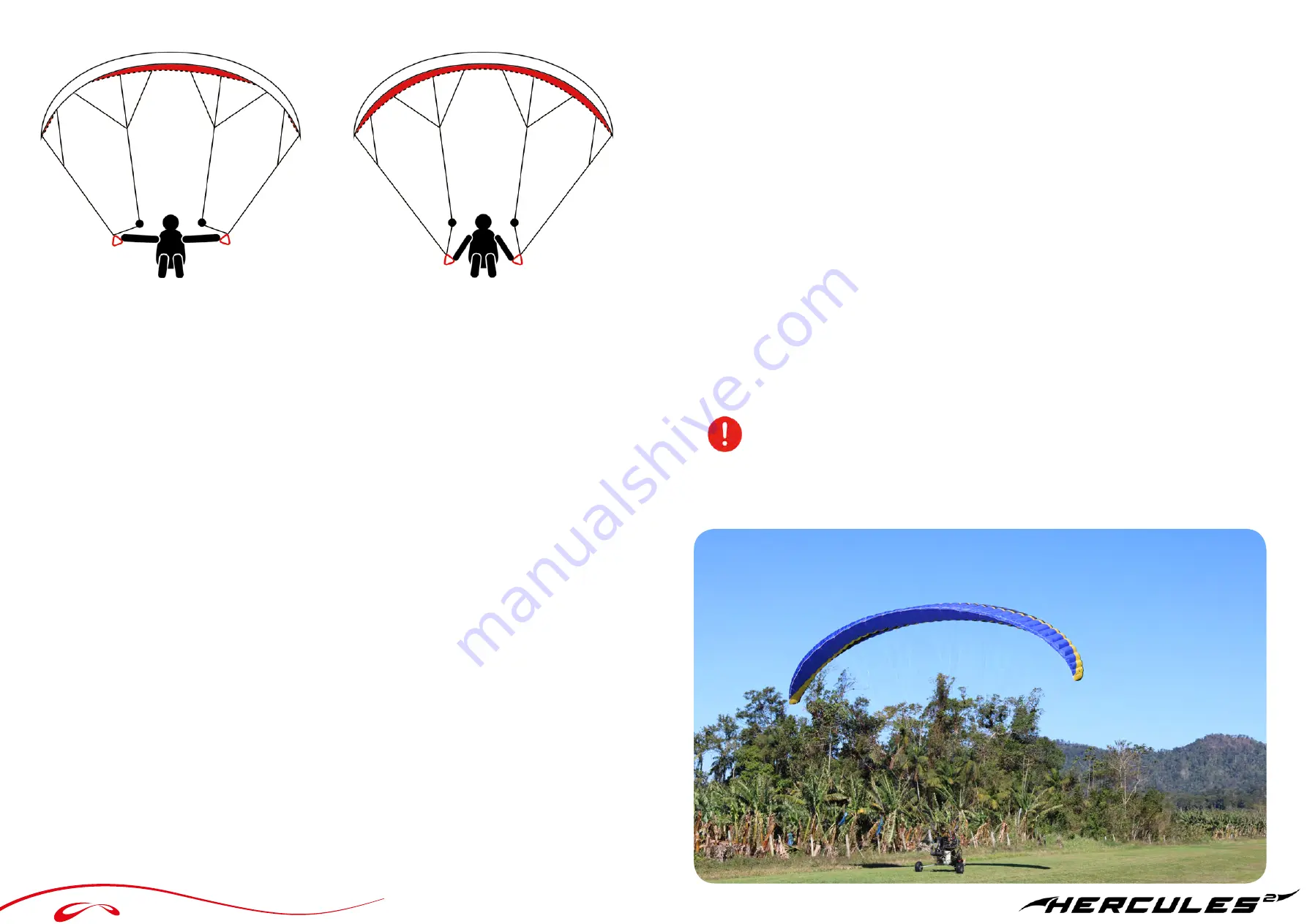
22
23
Normal speed reduction - Pull the two
commands vertically downwards.
Intense speed reduction - Recommended
for landings and starts. Pull the two
commands horizontally downwards to
the side.
- Helmet closed?
- Carabiners looked and closed?
- Harness all looks closed?
- Carabiner distance OK.?
- Risers A in hands?
- Brake lines free, brake handles in hand?
- Pilot stays in the midst of the canopy?
- Take off area free?
- Paratrike wing and pilot lined up against the wind?
- Air space in take off direction free?
FLIGHT
Take Off Check List
Take off
It is easy to take off with Hercules 2.
The pilot, ready to take off, must hold only the controls (brake handles), before inflating,
a last look of control over the extended equipment is mandatory.
Once this is done, slowly start taking off by gradually rotating the engine to approximately
50% of its capacity, bringing the paratrike wing over your head, with the possibility for
an eventual correction in the direction. Make sure the paratrike wing is over your head
and stabilized, at this point the pilot makes the decision to take off, or not. If the paratrike
wing starts to sustain the trike, increase the engine speed by increasing its speed and
consequently takeoff.
If the paratrike wing starts to sustain the trike, the pilot must progressively accelerate
until he leaves the ground.
Sol Paratrikes does not recommend using the engine force to inflate the
paratrike wing.













































